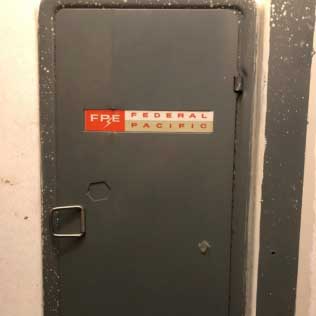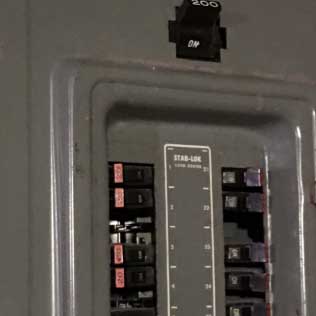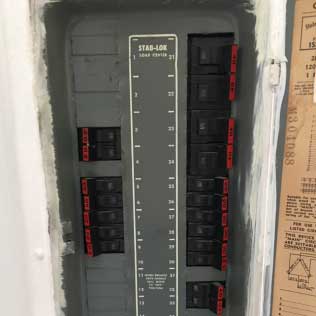Understanding Breaker Panel Risks: Why Replacement is Crucial
When it comes to ensuring the safety and efficiency of your home’s electrical system, knowing why to replace certain types of breaker panels is critical. The safety of your home and the well-being of your family may depend on the type of breaker panel installed in your home. Unfortunately, certain brands of breaker panels have been identified as significant fire hazards due to their defective designs and functionalities. This page aims to educate homeowners about the risks associated with specific breaker panels and why immediate replacement is crucial.
FPE Panels: A Notorious Risk



Among the most alarming are FPE Panels, also known as Federal Pacific Breaker panels. Widely installed across the United States from the 1950s to the 1980s, and in some cases until 1990, these panels pose a significant risk. The core issue lies in their breakers’ failure to meet UL (Underwriter’s Laboratories, Inc.) requirements, leading to a failure in tripping upon detecting a surge more than 50% of the time. This defect is linked to approximately 2500-3000 house fires annually, contributing to about $40 million in damages and tragically, 10-12 deaths per year. Investigations, including those by the IEEE (The Institute of Electrical and Electronics Engineers), have confirmed these breakers as fire hazards, prompting calls for industry and consumer awareness. Importantly, insuring a home equipped with an FPE breaker panel is often impossible, as insurance companies recognize the inherent risks.
Challenger Panels: Overheating and Recall Issues


Another concerning type is Challenger panels. Primarily installed in the 1980s and 1990s, these panels suffer from manufacturing errors that prevent breakers from tripping as intended. A prominent problem with Challenger panels is their tendency to overheat, even under normal electrical loads. This overheating can cause critical components such as the aluminum buss bar to expand and contract, leading to compromised connections and a high risk of arcing. The resultant damage can include melted buss bars and breakers, elevating the risk of fire. Due to these significant safety concerns, Challenger faced numerous recalls in the late 1980s, and insurance coverage for homes with these panels is not guaranteed.
Zinsco Panels: Defective by Design

The 1970s saw the installation of Zinsco Panels, known today for their severe overheating and melting problems. These panels, constructed with an aluminum alloy prone to oxidation, cannot sustain the higher electrical loads demanded by modern technology. The oxidation process compromises the buss bar and breakers, preventing them from tripping during an overload, which increases the risk of electrical fires. Testing revealed that these panels were defective in at least 25% of homes assessed, making them a critical risk to homeowners and a top candidate for immediate replacement.
The Importance of Panel Replacement
The safety hazards associated with FPE, Challenger, and Zinsco panels cannot be overstated. Homeowners with these panels should prioritize their replacement to protect their homes, families, and finances. Not only is this important for safety, but it also impacts insurance eligibility and the overall value of your property. Modern electrical panels are designed with advanced safety features and materials that significantly reduce the risk of fire, ensuring your home can safely handle modern electrical loads.
Right Pro Electrical Services LLC: Your Partner in Electrical Safety
At Right Pro Electrical Services LLC, we are committed to ensuring the safety and efficiency of your home’s electrical system. If you have an FPE, Challenger, or Zinsco panel, it’s time to consider an upgrade. We provide comprehensive electrical panel repair and replacement services tailored to meet the unique needs of your home. Recognizing the signs of a failing system and taking decisive action can prevent potential disasters. Call us today at Right Pro Electrical Services LLC or fill out our online form to get started.
